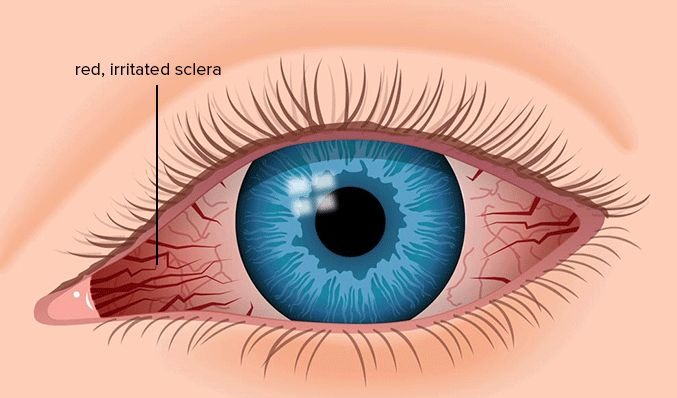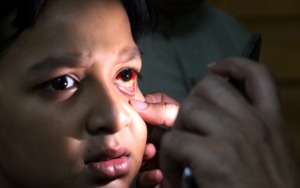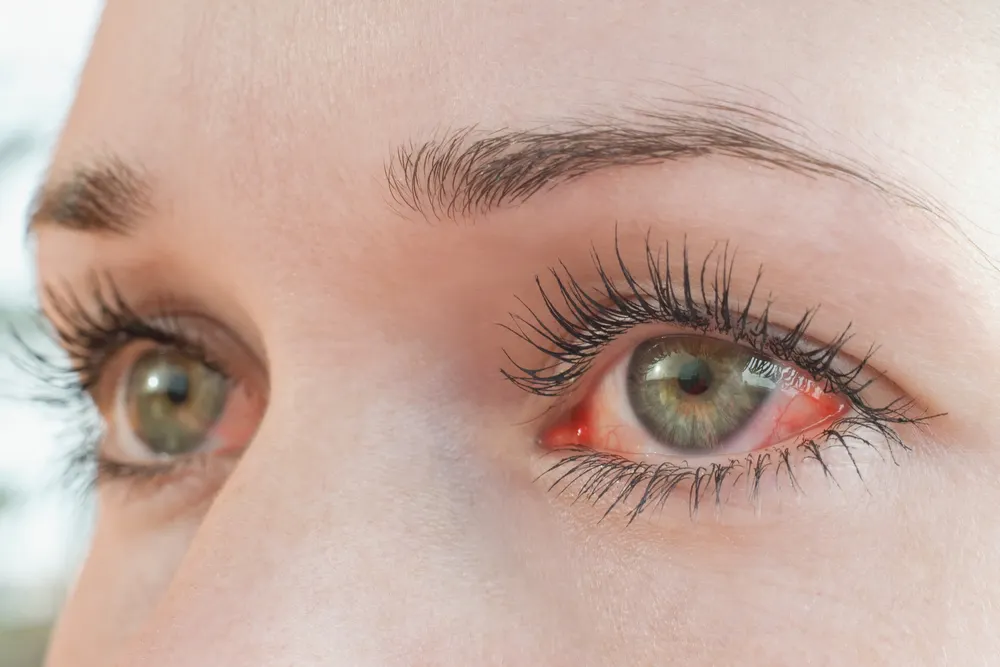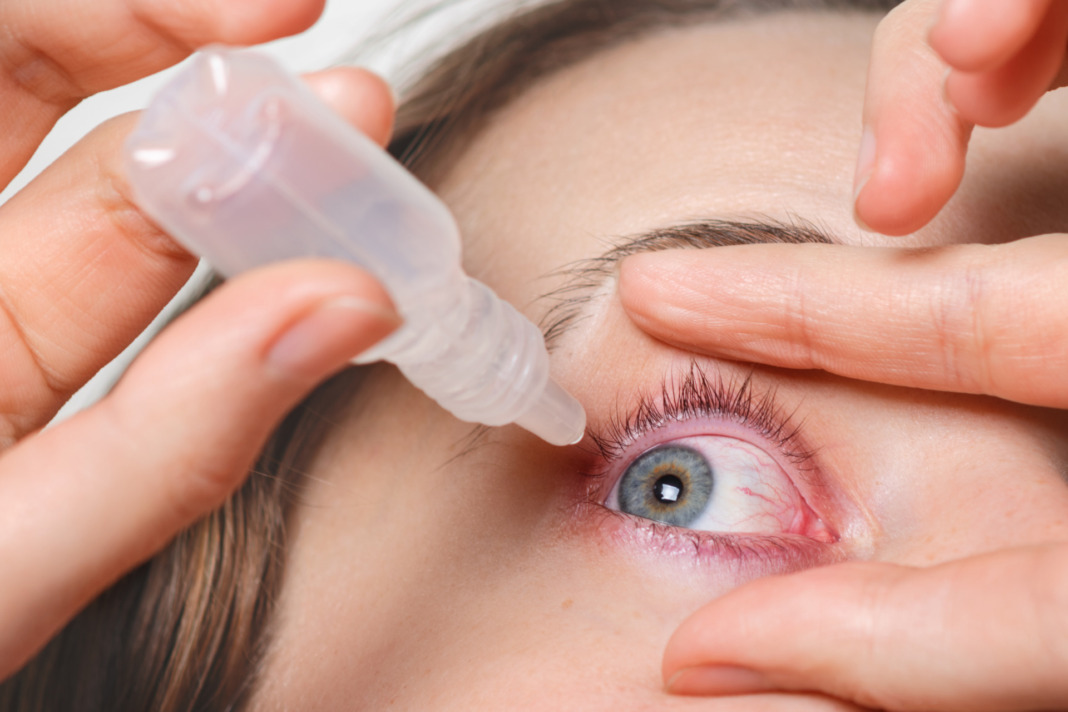Introduction
Knowing how to treat pink eye is very important but first, lets look at what pink eye really is. Pink eye, or conjunctivitis, is a common eye condition characterized by redness and inflammation of the transparent membrane (conjunctiva) covering the white part of the eye and lining the inner eyelids. It can affect individuals of all ages and is highly contagious. Understanding its types, symptoms, and treatment methods is essential for effective management.

Understanding Different Types of Pink Eye
Viral Conjunctivitis
The main cause of viral conjunctivitis is viruses, which are easily disseminated by coughing, sneezing, or coming into touch with contaminated surfaces. It tends to be very contagious and frequently coexists with respiratory illnesses.
Bacterial Conjunctivitis
The symptoms of bacterial conjunctivitis include redness, swelling, and a sticky discharge around the eyes. It spreads by direct contact and can infect one or both eyes.
Alergic Conjunctivitis
Allergens such as dust, pollen, or pet dander can cause allergic conjunctivitis. It causes redness, tears, and irritation in the eyes, frequently accompanied by additional allergy symptoms.
Irritant Conjunctivitis
Swimmers’ pools, smoke, chemicals, and other factors can all induce irritant conjunctivitis. It causes the eyes to become red, irritated, and feel grainy.
Recognizing the Signs of Pink Eye
Redness, itching, a scratchy feeling, excessive tearing, discharge (watery or pus-like), and light sensitivity are some of the symptoms. Recognizing these symptoms early on facilitates treatment.

How Is a Case of Pink Eye Diagnosed?
A physical examination of the eye, an assessment of the symptoms, and occasionally laboratory testing to pinpoint the precise reason are all part of the diagnosis process.
How To Treat Pink Eye
1. Treating Viral Conjunctivitis
In most cases, viral conjunctivitis goes away on its own in a matter of days. Relief can be obtained using over-the-counter lubricating eye drops and warm compresses, two examples of home treatments. Antiviral eye drops or ointments may be recommended in severe situations.
2. Treating Bacterial Conjunctivitis
Usually, a doctor’s prescription for antibiotics is needed to treat bacterial conjunctivitis. Effective treatment depends on maintaining good hygiene, not sharing personal goods, and taking all prescribed medications as directed.
3. Treating Allergic Conjunctivitis
Reducing exposure to allergens, using antihistamine eye drops, and applying cool compresses to relieve discomfort are all part of managing allergic conjunctivitis.
4. Treating Irritant Conjunctivitis
The key to treating this kind of conjunctivitis is avoiding irritation. Use artificial tears, rinse your eyes with clean water, and consult a doctor if your symptoms don’t go away.
Hygiene Practices to Prevent Pink Eye
Pink eye can be prevented or spread much less by practicing good hygiene, not rubbing one’s eyes, washing hands often, and not sharing personal items like towels or makeup.
When to Seek Medical Help
See a doctor if your symptoms get worse, if your vision changes, if you experience excruciating pain, or if you become sensitive to light.
Pink Eye Among Various Age Groups
Adults, children, and newborns are all affected differently by pink eye. Comprehending these variances facilitates the provision of suitable care and handling.

How to Treat Pink Eye at Home:
Warm Compress: Several times a day, apply a fresh, warm compress to the afflicted eye to ease discomfort and release any crusty discharge.
Cleanse the Eye: To get rid of any discharge, gently wash the eye with a saline solution or warm, clean water. For each eye, use a different clean cloth to prevent the infection from spreading.
Artificial Tears: To relieve irritation and maintain hydration in the eye, use artificial tear drops that are available over-the-counter.
Avoid Contact Lenses: To avoid aggravating the infection further, do not wear contact lenses until it has cleared.
Medical Treatments For Pink Eye
Antibiotics: To hasten healing and stop the spread of bacterial pink eye, your doctor may recommend antibiotic eye drops or ointments.
Antiviral Medication: Antiviral medications may be suggested for viral conjunctivitis.
Antihistamines or Mast Cell Stabilizers: If allergies are the cause, antihistamines or mast cell stabilizers can help reduce symptoms.
The Key to Preventing Pink Eye Is Prevention
Pink eye can be greatly reduced by taking easy preventive steps, such as maintaining proper hygiene and avoiding close contact with infected people.
Conclusion
Pink eye, though common and often manageable at home, requires understanding its types, symptoms, and appropriate treatment methods. Maintaining good hygiene and seeking medical advice when needed are essential for quick recovery and preventing its spread.
FAQs About Pink Eye
Q1: Is pink eye only contagious if it’s caused by a virus?
No, pink eye caused by bacteria or allergens can also be contagious.
Q2: Can pink eye be treated with only over-the-counter eye drops?
It depends on the type of pink eye; while some cases may improve with OTC drops, others may require prescription medication.
Q3: Can pink eye cause permanent vision loss?
In most cases, pink eye resolves without causing any lasting damage to vision if treated promptly and adequately.
Q4: Is it necessary to see a doctor for pink eye, or can it be treated at home?
Mild cases can often be managed at home, but it’s advisable to consult a healthcare professional, especially if symptoms worsen or persist.
Q5: How long does it typically take for pink eye to clear up?
The duration varies based on the cause. Viral pink eye may take up to two weeks, bacterial with proper treatment can clear in a few days, while allergic pink eye might last as long as the allergen exposure continues.



